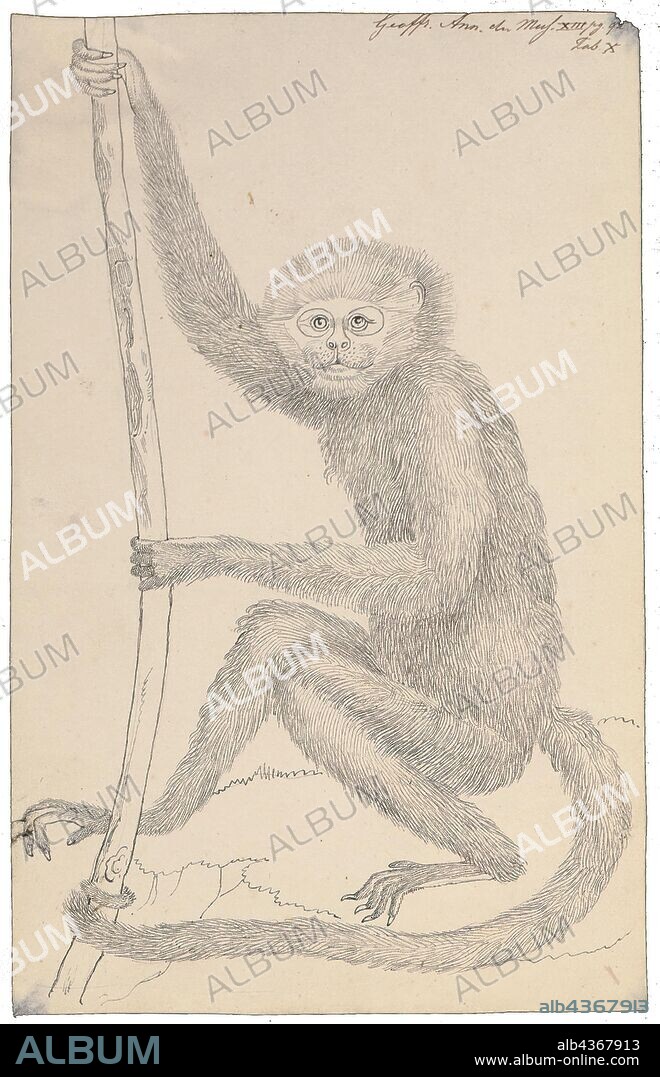alb4367913
Ateles marginatus, Print, The white-cheeked spider monkey (Ateles marginatus) is a species of spider monkey, a type of New World monkey, endemic to Brazil. It moves around the forest canopy in small family groups of two to four, part of larger groups of a few dozen animals. This monkey feeds on leaves, flowers, fruits, bark, honey and small insects, and it is an important means of seed dispersal for forest trees. Females give birth after a 230-day gestation period. The population of this monkey is decreasing as its forest habitat is lost to soybean production, deforestation and road construction. It is also regarded as a delicacy and hunted for food. For these reasons, the International Union for Conservation of Nature has assessed the animal's conservation status as being "endangered"., 1809.

|
Ajouter à une autre Lightbox |
|
Ajouter à une autre Lightbox |



Avez-vous déjà un compte? S'identifier
Vous n'avez pas de compte ? S'inscrire
Acheter cette image

Légende:
Voir la traduction automatique
Ateles marginatus, Print, The white-cheeked spider monkey (Ateles marginatus) is a species of spider monkey, a type of New World monkey, endemic to Brazil. It moves around the forest canopy in small family groups of two to four, part of larger groups of a few dozen animals. This monkey feeds on leaves, flowers, fruits, bark, honey and small insects, and it is an important means of seed dispersal for forest trees. Females give birth after a 230-day gestation period. The population of this monkey is decreasing as its forest habitat is lost to soybean production, deforestation and road construction. It is also regarded as a delicacy and hunted for food. For these reasons, the International Union for Conservation of Nature has assessed the animal's conservation status as being "endangered"., 1809
Crédit:
Album / quintlox
Autorisations:
Modèle: Non - Propriété: Non
Questions sur les droits?
Questions sur les droits?
Taille de l'image:
3338 x 5176 px | 49.4 MB
Taille d'impression:
28.3 x 43.8 cm | 11.1 x 17.3 in (300 dpi)
 Pinterest
Pinterest Twitter
Twitter Facebook
Facebook Copier le lien
Copier le lien Email
Email
